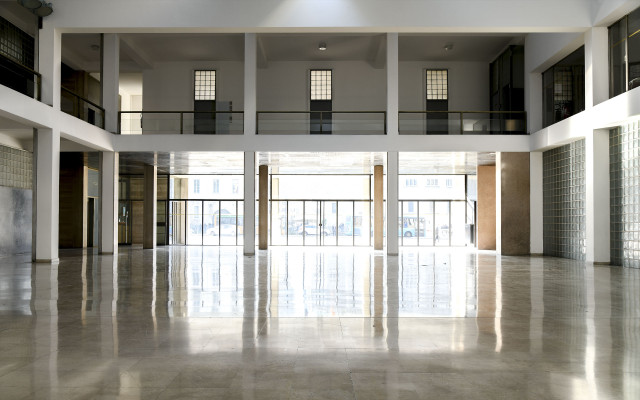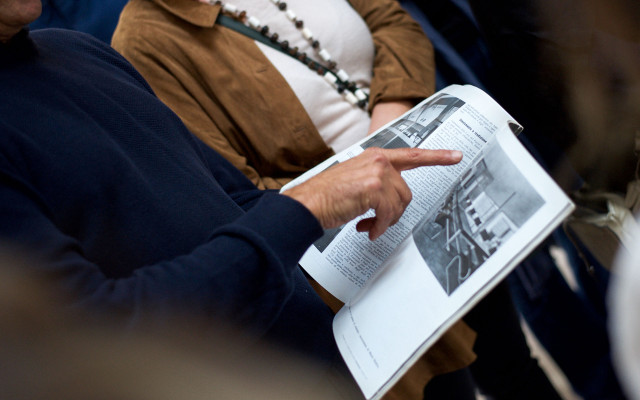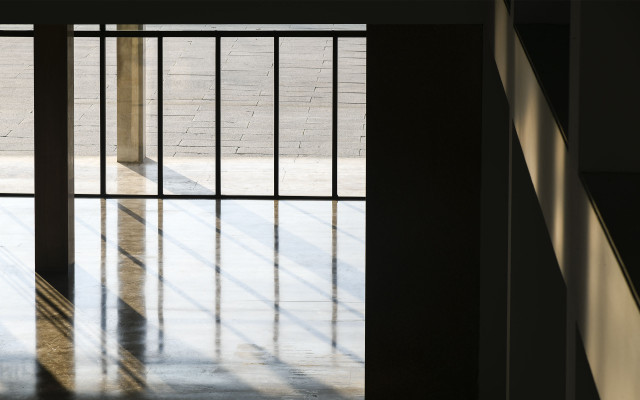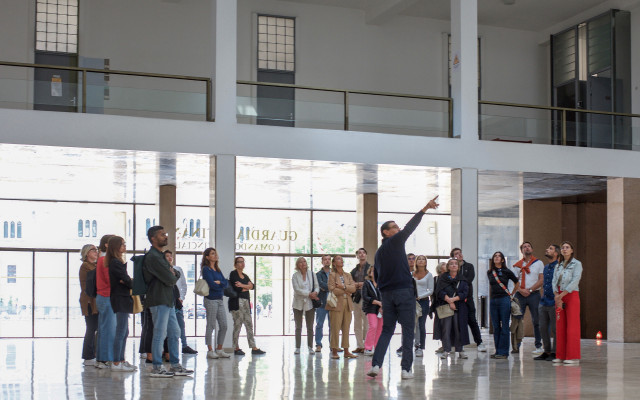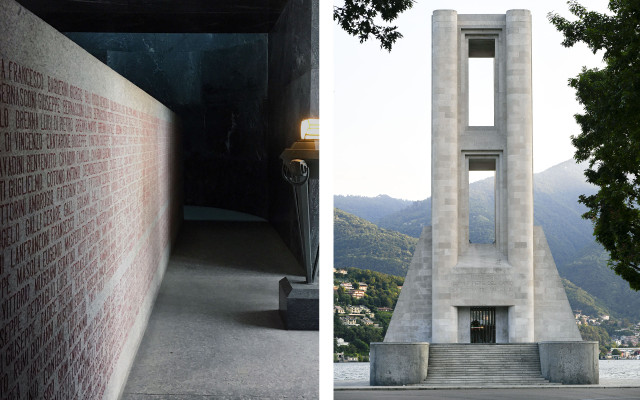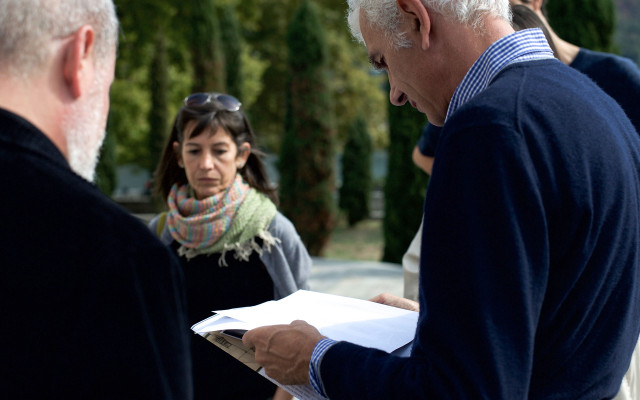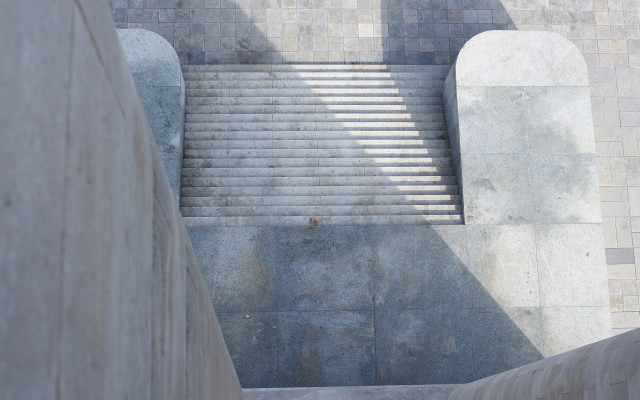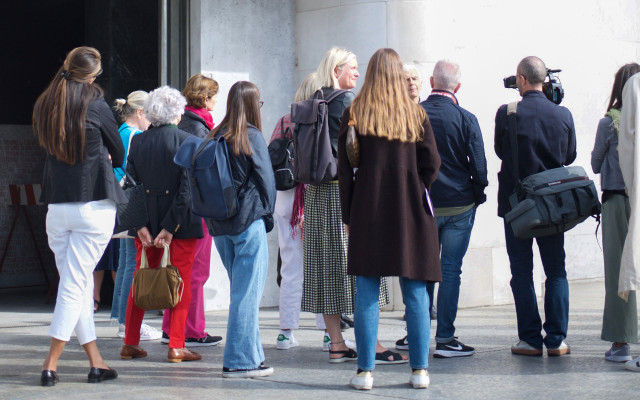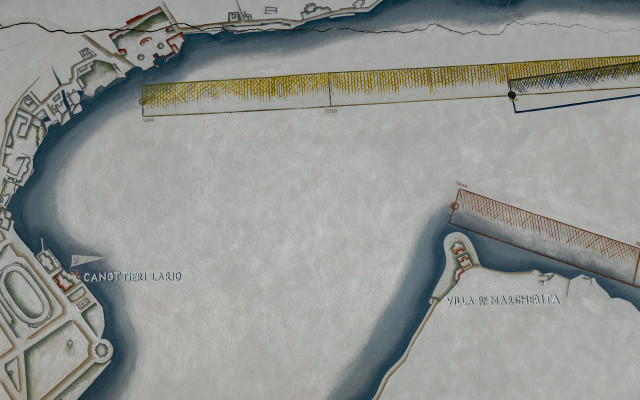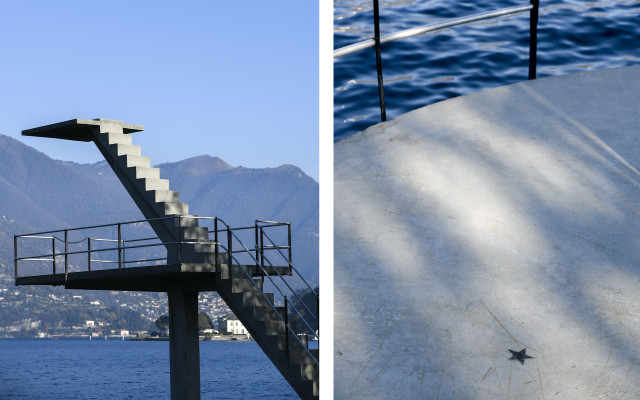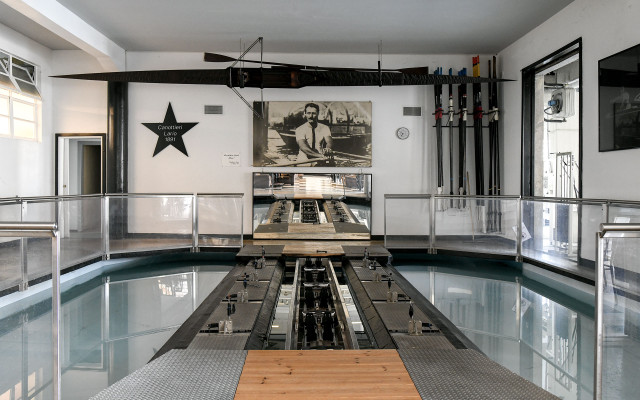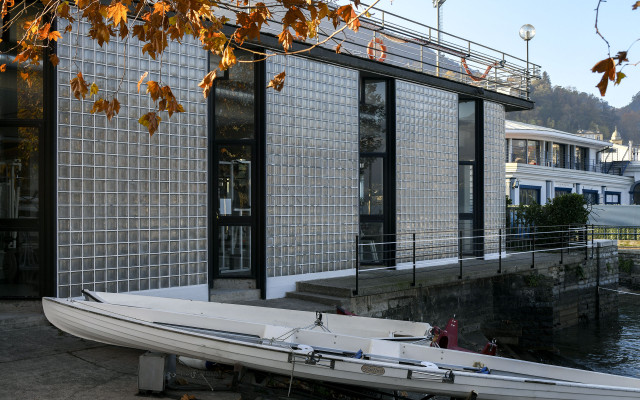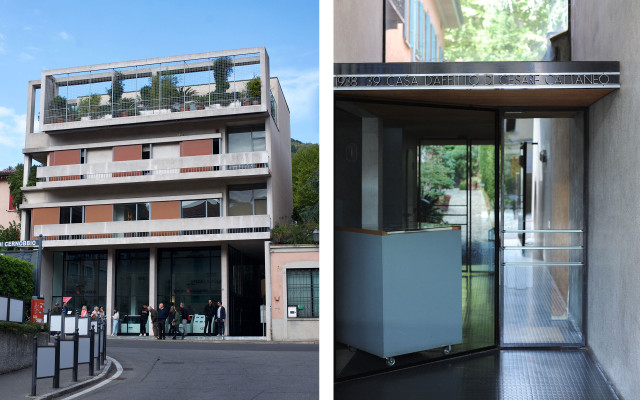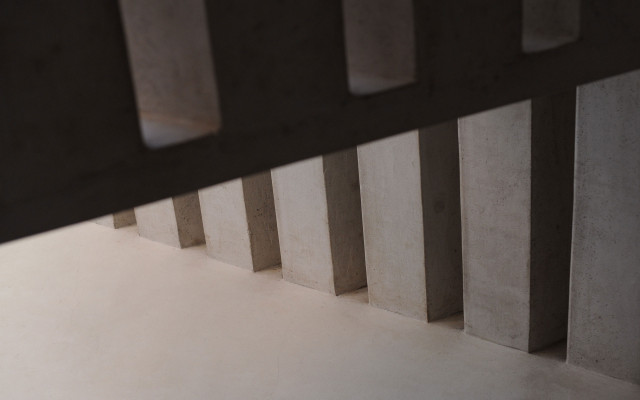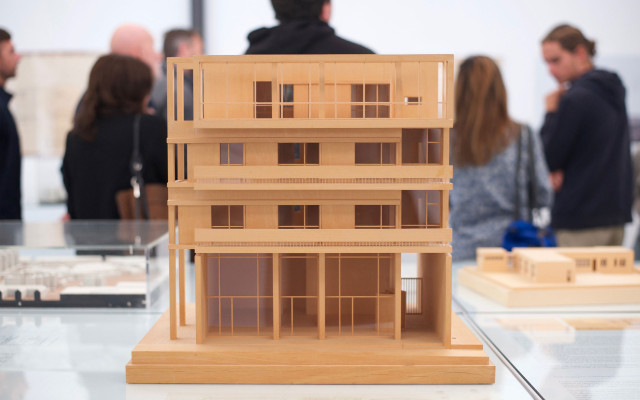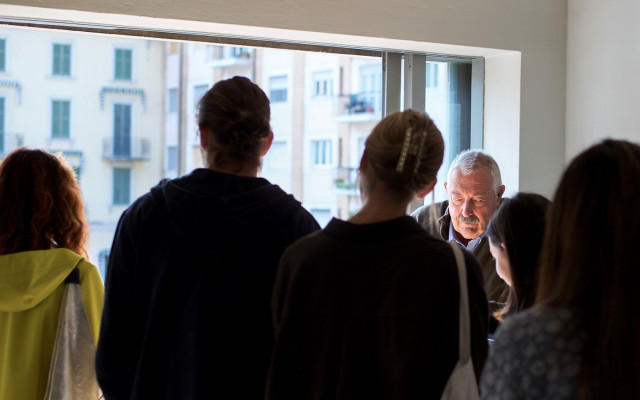Visits
The VISITS programme, promoted by the non-profit cultural association Wonderlake Como, has as its main objective to deepen and promote the artistic and architectural heritage of the Lake Como area, both with reference to the general international public and to the local one, through the creation over time of a series of networking activities involving companies, educational and training institutions of the area.
RATIONALIST COMO
Rationalist Como is a journey in the company of architects who will accompany you on a discovery of the masterpieces of Como's rationalism. Thanks to their contribution, you will be able to understand the key points linked to rationalist architecture and learn about the design inspiration of the masters, straddling history and modernity. Here below are our experiences.
Casa del Fascio (1932-1936). This work by Giuseppe Terragni (Meda 1904 - Como 1943) can surely be seen as the manifesto of rationalism in Como, both as a reflection on architecture as primordial genesis of space, and for the technical and formal ways in which plastic form was given to this reflection. In 1928 Terragni was commissioned to design a building that would give a physical sense of Mussolini's idea of authority, understood as the transparency of power in relation to the citizen. The concept suggested to Terragni a building where space, as a geometric construct, is nothing but delimitation and the modulation of light in a dialogue between interior and exterior such as to eliminate those very spatial determinations, sublimating them into a meta-dimension that enshrines the authority which confers identity on the citizen. Between 1932 and 1933, this product of Terragni's ingenious intuition took shape as he strove to have it built, working on every detail himself. All the interiors and furnishings, including the Lariana chair and the Benita armchair, were personally designed by him as he did not see them as accessories, but rather as essential parts and specific expressions of the architectural space itself.
For information and reservation experience@wonderlakecomo.com
....
Monumento ai Caduti (1931-1933). We owe to Marinetti the suggestion to translate into architecture a drawing by Antonio Sant'Elia, Monumento con lanterne (1912), to honour those of Como who fell in the Great War. The work was overseen by the engineer Attilio Terragni, who from late 1931 would involve his brother Giuseppe in the work, agreeing on a structure as that should be as pure and minimalist as possible. In Giuseppe's interpretation, the upward-reaching form that characterises Sant'Elia's design becomes an eschatological emblem. It involves a complex play between interior of the building, occupied on the mezzanine level by the monolith bearing the names of the fallen, and at the basement level by the crypt, which was never finished. The surface of the monolith bears the names of the fallen, inscribed in alphabetical order, continuously, and with no indications of rank. The sacrifice of each is present and central, placing itself between the alienating darkness of death, represented by the crypt, and a mighty upward movement to the free blueness of the sky. The Monument to the Fallen is thus the architectural expression of an ascending three-beat rhythm particularly dear to Terragni. This would perhaps find its supreme and most accomplished expression in the Danteum in Rome, a shrine to Dante that was never actually built, in which the architect set out to translate the theological-metaphysical framework of the Divine Comedy into harmonic relationships.
For information and reservation experience@wonderlakecomo.com
....
Cittadella dello Sport (1926-1935). The extensive area between Viale Rosselli and Borgo Vico is traditionally known as the Cittadella dello Sport because it houses the headquarters of the historic sports associations of the Como area, and may be seen as an open-air museum of rationalist architecture. All of the buildings here sprang up almost simultaneously, in what was an expression of the wish for renewal and transformation that characterised the city of Como in the first three decades of the 20th century. It was also the result of a fervent drive by the fascist regime to encourage sport at the national level, where physical activity was effectively a paramilitary exercise. It is certainly no coincidence that the Monument to the Fallen stands in the immediate vicinity as a constant reminder to young people of the nobility of sacrifice for the Fatherland. In addition to Attilio and Giuseppe Terragni, the latter the builder of the Novocomum residential block (1926-1927), the engineers Carlo Ponci and Gianni Mantero were also leading figures in this movement of extraordinary construction synergy. Ponci was responsible for the Hangar, the headquarters of the Aero Club Como, a metal building of traditional conception by comparison with Giuseppe Terragni's ingenious project, providing an arched reinforced concrete roof flanked by structures with a linear geometry, according perfectly with the Novocomum paradigm. Mantero, for his part, was behind the creation of the Sinigaglia Pool and the Canottieri Lario, both buildings displaying notable purity and simplicity of form, where functionality is combined with aesthetics in an essentially symbiotic relationship without being invasive with respect to the environment.
For information and reservation experience@wonderlakecomo.com
....
Casa Cattaneo (1938-1939). An extension of a family building in Cernobbio, the Casa d’affitto is a four-story house with only one apartment per floor and a shop on the ground floor. The building features overhanging balconies and strongly accented superimposed cornices that emerge from the prism and challenge the elementary geometry to produce a dynamic and disturbed result that is unique in Italian rational architecture. Its takes up some of the ideas put forward by Le Corbusier at the Circolo delle Arti e delle Lettere in Rome in December 1934:
Ancient times and new times can be expressed by two patterns of striking contrast. One shows the house rooted in the ground, covered with a pitched roof; the other pattern shows the building detached from the ground, above the ground, it possesses a flat roof planted on the ground. This fundamental system arises from the potential of steel and concrete...
When Cattaneo designed the house he was only 25 years old and transposed theoretical ideas into technological and functional applications, achieving a great construction achievement coupled with extraordinary formal innovation, testifying to his right to be heard above the “shouts thrown into the ring of insipid yet sophisticated conversation”. In 1942, Franco Ciliberti, the ideologue of the Como Group, referred to the Casa di Cernobbio and the Casa del Fascio in Como as “two masterpieces of functional architecture”. The building constructed by Cattaneo in Cernobbio would become so emblematic of its type that in 1943 Alberto Sartoris used its image on the title page of his Introduction to Modern Architecture.
For information and reservation experience@wonderlakecomo.com

